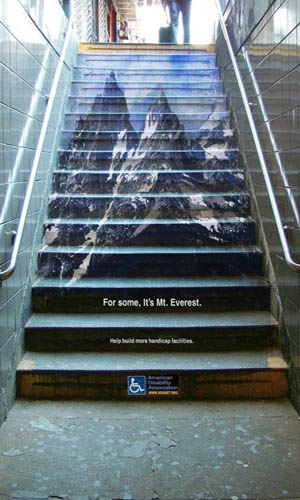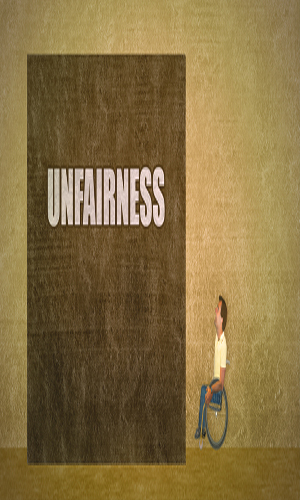Before beginning this section, allow me to say that these few short paragraphs aim not to give an extensive history of the definition of disability, but rather to define it in the context in which I will be using the term. With that said, we must begin our interpretation of what it is to be handicapped by separating impairment from disability.
According to head of the division of sociology and social policy at Glasgow Caledonian University Bill Hughes, “Medicine has dominated the interpretation of disability for most of modernity. Consequently, disability has been construed in corporeal terms as an outcome of physical or mental impairment, and sociology has been- with respect to the interpretation of disability- an absent presence in which the presence is often difficult to detect.” 1
Disability, then, refers not just to a physical handicap, but also to the social obstacles placed in the way of handicapped people. For centuries, Western thought has deemed disability a disease, inborn and irreversible. Thus, scholars have considered the handicapped in a physical sense only, though the inequalities they face in their treatment are derived largely from a social basis.
The next few sections will aim to explore the obstacles faced by the disabled in America, and how public opinion has changed, beginning with the industrial economy, then with the advent of the wheelchair after the First World War, and finally with the obsession with the body in the past few decades.


To begin, I will turn to Bill Hughes for two theses on disability in America. He argues that there are “three key moments in the development of the relationship between disability and the body.” 2 They are as follows:
Disability from 1900 to the end of the First World War: “The ontological essence of disability is a physical or mental impairment or a biological ‘deficit’ or ‘flaw’ that limits what disabled people can do.” 3
Disability from 1930-1970: ““Disability is not a medical or personal problem but a set of physical and social barriers that constrain, regulate, and discriminate against people with impairments.” 4
(The dates are mine.)
Finally, I would like to propose a third thesis of my own: in the present day, with the advent of modern obsession with internalizing technology to improve the body, disability presents not a cumbersome difficulty to American society, but an opportunity for furthering the human-prosthesis relationship.
Back to The Wheelchair Table of Contents
Footnotes
1 Hughes, Bill. “Disability and the Body.” Disability Studies Today. Ed. Colin Barnes, Mike Oliver, and Len Barton. Malden, Massachusetts: Polity Press, 2002, 58-76, p. 58
2 Ibid, p. 73
3 Ibid, p. 60
4 Ibid, p. 63
